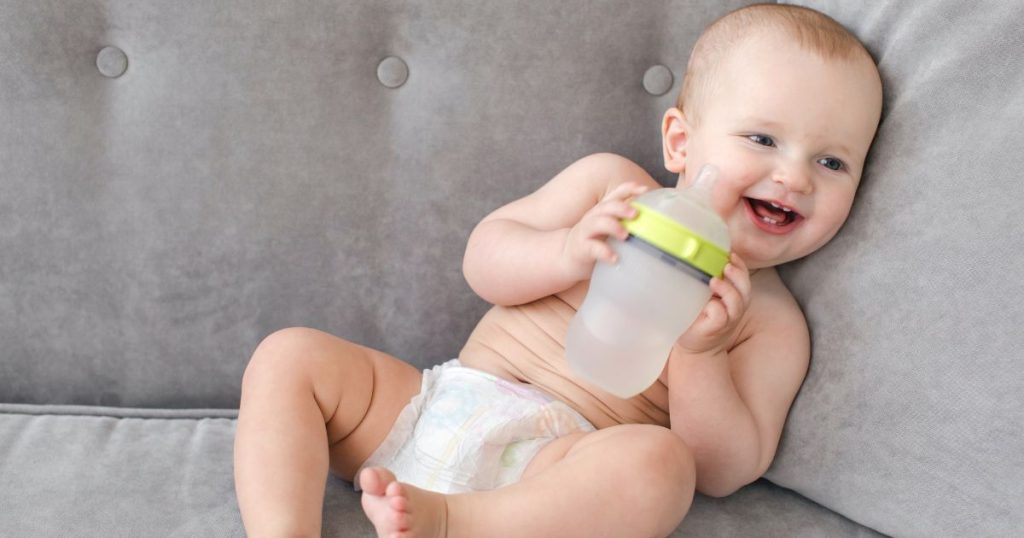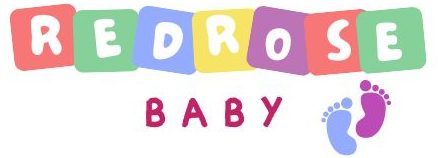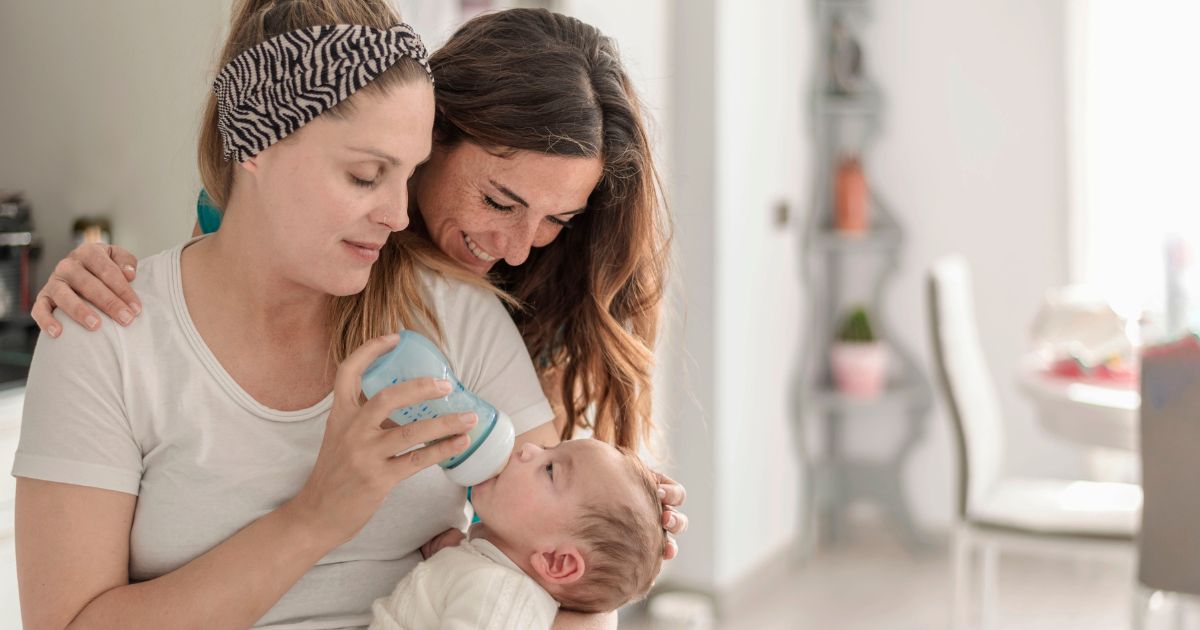Introduction
Best baby bottles for newborns. Picking the best infant bottle for your newborn can feel like a significant task. From anti-colic functions to various nipple materials and bottle shapes, every option seems critical.We will guide you through everything you need to know about selecting the best baby bottles for your child. We’ll explore the various types readily available, break down the functions that genuinely matter, and offer in-depth reviews of top-rated bottles.

We’ll cover products such as plastic, glass, and silicone, discuss the significance of anti-colic systems, and describe how to choose the best nipple shape and flow rate. By the end, you’ll understand what makes a bottle a terrific choice for your infant, whether they are breastfed, formula-fed, or combination-fed.
Understanding the Anatomy of a Baby Bottle
Before diving into the leading picks, it’s helpful to understand the basic components of a baby bottle. While styles differ, most bottles consist of four main parts: the bottle base, the nipple, the collar, and the cap. Understanding how these pieces collaborate is the primary step in discovering a bottle that suits your newborn’s requirements.
The Bottle Base: Material Matters
The base is the main container that holds the milk or formula. The product it’s made from is one of the most considerable choices you’ll make.
Modern plastic bottles are required to be BPA-free; however, some parents still have concerns about chemicals leaching from the plastic over time or when heated. Look for bottles made from polypropylene (PP).
Glass Bottles: Glass is a classic choice for a factor. The main drawbacks are their weight and the risk of damage, although many now come with protective silicone sleeves to mitigate these issues.
Silicone Bottles: A newer alternative, silicone bottles provide a distinct mix of advantages. The soft, squeezable body can be soothing for a baby and might assist with feeding.
Stainless-Steel Bottles: Although less common, stainless steel bottles are a long-lasting, lightweight, and chemical-free option. They are solid and can keep liquids cool or warm for longer periods. They are non-transparent, making it impossible to see how much milk is left inside.
The Nipple: Shape, Flow, and Feel
The nipple is perhaps the most critical part for your baby. Its style can straight affect how well your newborn feeds and latches.
Nipple Material: Most nipples are made from silicone or latex. Silicone is firm, durable, and holds its shape well. Latex is softer and more flexible, but breaks much faster and can trigger allergies in some babies.
Nipple Shape: You’ll find a wide range of shapes created to imitate the breast, promote a correct lock, or provide healthy comfort in a child’s mouth. Standard, bell-shaped nipples are conventional. Orthodontic nipples are created to support palate development. Wide-neck nipples are intended to feel more like a breast, making them a popular choice for breastfed children.
Nipple Flow Rate: Nipples are available in different flow rates, ranging from slow to fast. For babies, a slow-flow nipple is practically always the proper option. It enables the infant to control the rate of feeding, avoiding them from gulping too much milk too quickly, which can cause gas and pain. As your child grows and their sucking strength increases, you can transition to faster flow rates.
The Collar and Cap: The Supporting Cast
The collar is the ring that screws onto the bottle base to hold the nipple in place. The collar must create a secure, leak-proof seal. The cap merely covers the nipple to keep it tidy during transport or storage.
Key Features to Look for in Newborn Bottles
Beyond the fundamental parts, several functions can improve the feeding experience for both you and your child. When comparing the best baby bottles for babies, consider these essential attributes.

Anti-Colic Vents and Systems
Colic is characterized by prolonged, intense crying in an otherwise healthy baby. While its specific cause is unidentified, swallowing excess air during feedings is a major contributing element. Anti-colic bottles are specifically designed to reduce air intake.
These bottles include vents, valves, or internal systems that enable air to enter the bottle as the infant drinks. This avoids a vacuum from forming, which can collapse the nipple and trigger the child to ingest air bubbles. Common styles consist of:
Vents in the nipple base: Small openings in the rim of the nipple let air flow into the bottle.
Internal vent systems: A tube or straw-like system channels air from the collar to the bottom of the bottle, keeping it far from the milk.
Bottom-vented bottles: Vents at the base of the bottle perform the very same function.
For babies whose gastrointestinal systems are still developing, an effective anti-colic system can make a significant difference in reducing fussiness, spitting up, and gas.
Relief from Cleaning
You will be washing bottles numerous times a day, so ease of cleaning is a practical necessity. Bottles with fewer parts or a wide-neck style are generally easier to clean.
Bottle Shape and Size
Newborns consume small amounts regularly, so a smaller-sized 4-ounce or 5-ounce bottle is ideal for their needs. Bigger 8- or 9-ounce bottles are a better fit for older infants. The shape of the bottle can likewise matter. Some are angled to promote a semi-upright feeding position, which can aid digestion. Others have an ergonomic shape that is comfy for both parent and, ultimately, infant to hold.
Compatibility with Breast Pumps
If you plan to pump breast milk, selecting bottles that are compatible with your breast pump can save you a substantial amount of time and effort. Many brand names use adapters or design their bottles to screw directly onto popular pump designs. This enables you to pump straight into the bottle you will use for feeding, decreasing milk transfers and the variety of products you need to wash.
The Best Baby Bottles for Newborns in 2025: A Detailed Review
Navigating the market can be challenging, so we’ve curated a list of the finest bottles for babies, focusing on their key features, benefits, and what makes them stand out.
Best For: Colic and Gas Prevention
Dr. Brown’s bottles are nearly synonymous with “anti-colic.” They are an enduring favorite among moms and dads, as well as pediatricians, for their scientifically proven ability to reduce colic, spit-up, burping, and gas.
Key Feature: The Internal Vent System. The signature function of Dr. Brown’s bottles is the two-piece internal vent system. This system channels air away from the milk, preventing negative pressure and air bubbles from forming. This not only lowers colic symptoms but also helps maintain nutrients in breast milk and formula, as it limits direct exposure to air that can trigger the oxidation of vitamins C, A, and E.
Design and Use: The narrow bottle style is simple for parents to hold. The silicone nipple is developed to provide a consistent, controlled circulation. The “Options+” part of the name indicates that you can utilize the bottle with or without the vent system as your child grows and their feeding needs develop.
Cleaning: The main downside is cleaning. The vent system consists of two additional parts that require a unique, small brush (included) for thorough cleaning. While all parts are dishwasher-safe, the extra step can be tiresome for worn-out parents.
Who It’s For: This bottle is an excellent option for any newborn, but it is particularly advantageous for infants who are susceptible to colic, reflux, or gas. Dr. Brown’s is frequently the first bottle moms and dads turn to for relief when their baby seems uncomfortable and fussy after feedings.
2. Comotomo Baby Bottle
Best For: Breastfed Babies and Combination Feeding
The Comotomo bottle was designed to address a common issue: bottle rejection. Its special design closely mimics the breastfeeding experience, making it a leading contender for babies who change between breast and bottle.
Secret Feature: A Breast-Like Design. The bottle is made from soft, squeezable silicone that feels more like skin than tough plastic or glass. The mound-shaped base and broad nipple are designed to replicate the shape and feel of a mother’s breast, encouraging a natural, wide latch.
Design and Use: The super-wide neck makes this bottle incredibly easy to clean by hand —no bottle brush is needed. It features two anti-colic vents built into the nipple to ensure excellent airflow and prevent a vacuum from forming. The bottle comes standard with a slow-flow nipple, best suited for babies and designed to avoid nipple confusion.
Considerations: The soft silicone can, in some cases, be toppled more easily than stiff bottles. Additionally, the measurement markings can be difficult to read.
Who It’s For: This is the go-to bottle for parents who are breastfeeding and wish to present a bottle without disrupting the nursing relationship. Its design helps prevent nipple confusion, making the transition seamless for many babies.

Best For: Paced Feeding and Versatility
Philips Avent is a trusted name in infant products, and their Natural bottle is a perennial favorite. The most recent version features the ingenious Natural Response Nipple, which further improves its appeal for babies.
Key Feature: The Natural Response Nipple. This distinct nipple is designed only to release milk when the baby is actively drawing, much like a breast. This allows the baby to control the rate of feeding, drinking, swallowing, and breathing at their own rhythm. This paced-feeding function can help prevent overfeeding and reduce spit-up.
Design and Use: The bottle boasts a comfortable, ergonomic shape and a broad neck, facilitating easy filling and cleaning. The AirFree vent (sold separately or in certain present sets) is a single-piece insert designed to keep the nipple full of milk, not air, even when held horizontally, thereby reducing air intake. The bottle has an extremely small number of parts, making assembly and cleaning uncomplicated.
Compatibility: Philips Avent bottles are part of a large community of products. They are compatible with many Philips Avent breast pumps and other devices, producing a practical system for moms and dads.
Who It’s For: This bottle is a fantastic all-around alternative. It’s especially great for parents who want to encourage a natural feeding pace, whether they are specifically bottle-feeding or using a combination of feeding methods.
4. Nanobébé Flexy Silicone Baby Bottle
Best For: Easy Handling and All-in-One Pumping System
The Nanobébé Flexy Silicone Bottle stands out for its modern-day style and parent-friendly features. It’s created to be the “most sophisticated silicone child bottle” on the market.
Unlike some other soft silicone bottles, the Flexy features a steady, non-tipping base, which is a significant yet subtle style win. For pumping moms and dads, the major advantage is its direct compatibility with many standard-neck breast pumps (adapter included), allowing you to pump, store, warm, and feed all from the same bottle.
Style and Use: The bottle has a soft, familiar feel and an ergonomic shape that’s simple for small hands to grip ultimately. The broad neck and minimal parts make cleaning simple. It’s also acknowledged for its extremely slow-flow nipple, which is perfect for newborns and breastfed babies.
Considerations: As a premium silicone bottle, it comes at a greater cost. The measurement markings, like on other silicone bottles, can be a bit faint.
Who It’s For: Parents looking for a premium silicone bottle with thoughtful design touches will appreciate the Nanobébé Flexy. It’s an exceptional option for those who plan to pump and desire a streamlined, all-in-one feeding system.
5. Advantage NURSH Silicone Pouch Bottle
Best For: Air-Free Feeding and Easy Cleaning
The Boon NURSH bottle provides a unique method of anti-colic technology. Rather than vents, it uses a retractable silicone pouch that works like a disposable liner but is reusable.
Secret Feature: The Collapsible Silicone Pouch. As your baby feeds, the silicone pouch inside the rigid plastic shell collapses.
Style and Use: The bottle is easy to put together. You position the silicone pouch inside the outer shell and screw on the nipple. Cleaning is likewise extremely simple. You can flip the silicone pouch inside out to scrub it tidy, and all parts are dishwasher-safe.
Considerations: You need to squeeze the air out of the pouch before beginning the feed. Some parents find it a little tricky to read the volume markings through the external shell and inner pouch.
Who It’s For: This bottle is perfect for moms and dads who desire the absolute finest in air-reduction innovation without the trouble of cleansing complex vent systems. It’s a modern, ingenious service for babies with delicate bellies.
How to Introduce a Bottle to a Newborn
Presenting a bottle for the very first time requires persistence and the best timing.
Timing is Everything: For breastfed children, experts frequently recommend waiting until breastfeeding is established, generally around 3-4 weeks of age, to prevent nipple confusion.
Select a Calm Moment: Don’t wait until your child is anxiously starving. When they are calm and relaxed, introduce the bottle.
Let Someone Else Do It: Babies often associate their mother with breastfeeding. It can be helpful to have your partner or another caregiver offer you the first bottle.
Warm the Milk (and the Nipple): Warm the milk to body temperature by positioning the bottle in a bowl of warm water. You can likewise run warm water over the nipple to make it more welcoming.
Motivate a Good Latch: Tickle your baby’s lips with the nipple to encourage them to open their mouth wide, then assist them in latching onto the base of the nipple, not just the tip.
Speed the Feeding: Hold your child in a semi-upright position and keep the bottle horizontal to the floor. This enables the baby to control the flow and take breaks as required.

FAQ.
Q: How many child bottles do I require for a newborn?
A: It’s a good idea to start with a range pack or simply a couple of bottles from several different brands to see what your baby chooses before committing. Once you’ve found a winner, having 6-8 bottles on hand is usually sufficient for a day’s worth of feedings, which reduces the need for constant cleaning and refilling.
Q: When should I move up a nipple size?
You’ll know it’s time to move up when your infant starts to appear disappointed throughout feedings, draws strongly, or collapses the nipple. Other indications include feedings taking much longer than they used to or your baby falling asleep during a feed.
Q: Can I blend and match bottle brands and nipples?
A: It is typically not recommended to blend and match parts from different brand names. Nipples, collars, and bottles are created to work as a system. Using parts from various makers can lead to dripping, incorrect venting, or a hazardous fit.
Q: How do I properly tidy and decontaminate baby bottles?
A: For daily cleansing, wash all bottle parts in hot, soapy water using a dedicated bottle brush and nipple brush. Guarantee you rinse all soap residue. Most bottles are top-rack dishwasher safe. For sanitation, specifically for babies or premature infants, you ought to disinfect bottles at least daily. You can do this by boiling them in water for 5 minutes, utilizing a microwave steam sterilizer, or an electrical steam sterilizer. Allow parts to air dry completely on a clean rack.
Q: Are glass infant bottles safe for babies?
A: Yes, glass bottles are very safe. Using a protective silicone sleeve can provide additional grip and offer a layer of protection against breakage.
Q: What is the finest bottle for a gassy baby?
A: For gassy children, an anti-colic bottle is a must. Dr. Brown’s Natural Flow, with its internal vent system, is widely regarded as the gold standard for preventing gas. Other excellent options include the Philips Avent Natural with its AirFree vent, and the Boon NURSH, which utilizes a collapsing pouch to create an air-free feed.
Meta Title: Best Baby Bottles for Newborns (2025 Buyer’s Guide).
Meta Description: Find the best infant bottles for your newborn. Our comprehensive guide reviews top bottles for colic, breastfed babies, and easy cleaning. Make a positive option.
While styles vary, the majority of bottles consist of four main parts: the bottle base, the nipple, the collar, and the cap. Silicone Bottles: A newer option, silicone bottles provide a unique combination of advantages. These bottles feature vents, valves, or internal systems that enable air to enter the bottle as the child drinks. Style and Use: The super-wide neck makes this bottle extremely easy to clean by hand — no bottle brush is required. A: For daily cleansing, clean all bottle parts in hot, soapy water utilizing a dedicated bottle brush and nipple brush.
<script type="application/ld+json">
{
"@context": "https://schema.org",
"@type": "BlogPosting",
"mainEntityOfPage": {
"@type": "WebPage",
"@id": "https://redrosebaby.com/"
},
"headline": "10 Best Baby Bottles for Newborns – Ultimate Parents’ Guide",
"description": "Best baby bottles for newborns. Picking the best infant bottle for your newborn can feel like a significant task. From anti-colic functions to various nipple materials and bottle shapes, every option seems critical.We will guide you through everything you need to know about selecting the best baby bottles for your child. We'll explore the various types readily available, break down the functions that genuinely matter, and offer in-depth reviews of top-rated bottles.",
"image": "https://redrosebaby.com/wp-content/uploads/2025/09/best-baby-bottles-for-newborns-2-1024x538.jpg",
"author": {
"@type": "Person",
"name": "Masud Parvez",
"url": "https://redrosebaby.com/about/"
},
"publisher": {
"@type": "Organization",
"name": "Masud Parvez",
"logo": {
"@type": "ImageObject",
"url": "https://redrosebaby.com/wp-content/uploads/2025/09/cropped-red-rose-baby.jpg"
}
},
"datePublished": ""
}
</script>
